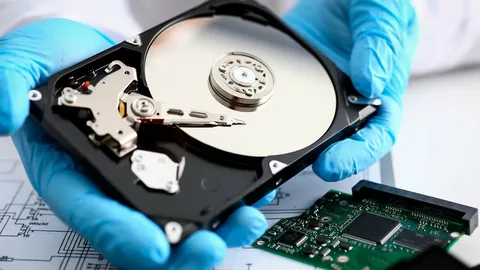Data loss can be a nightmare, especially when dealing with solid-state drives (SSDs). Unlike traditional hard drives, SSDs operate using complex electronic components that sometimes fail, making data recovery a challenging task. However, using donor SSD components has emerged as an effective solution for data retrieval from damaged drives. This article explores how donor SSD parts of data recovery and why this method is gaining traction among data recovery specialists.
Understanding the Basics of SSD Data Recovery
SSDs are made up of various components, including the controller board, NAND flash memory chips, and firmware. When an SSD fails, the damage can be physical (such as a burnt controller) or logical (corrupted firmware or data structures). Traditional software-based recovery methods may not always work if the SSD hardware is compromised. This is where donor SSD components come into play.
What Are Donor SSD Components?
Donor SSD components are functional parts taken from an identical or compatible SSD model used to replace damaged components in a faulty SSD. Common donor parts include the controller board, DRAM cache chips, or even specific NAND flash chips. By swapping out the faulty hardware with these donor components, technicians can access the drive’s data and perform recovery operations.
How Donor SSD Components Can Help You Retrieve Lost Data
Using donor SSD components is a precise and technical approach to recover data from SSDs suffering from hardware failures. Here’s how they assist in data retrieval:
1. Replacing Damaged Controller Boards
The controller board is the brain of the SSD, managing all data operations. If the controller board is damaged, the SSD may become completely inaccessible. Swapping it with a donor controller board from an identical SSD model allows recovery specialists to communicate with the NAND chips and extract data.
2. Bypassing Firmware Corruption
Sometimes, the firmware on the controller can become corrupted, preventing data access. A donor SSD’s firmware chip or a clone of the firmware can be used to replace or reprogram the faulty firmware, enabling data recovery tools to access the drive normally.
3. Utilizing Functional NAND Chips from Donor SSDs
In extreme cases, if the NAND chips themselves are damaged or unreadable, data can sometimes be salvaged by transferring these chips onto a donor PCB (Printed Circuit Board). This method demands specialized equipment but can be highly effective in data retrieval.
Advantages of Using Donor SSD Components for Data Recovery
- Increased Success Rate: Hardware-level repairs with donor parts significantly improve the chances of retrieving lost data compared to purely software-based recovery.
- Cost-Effective: Avoids the need for more expensive and time-consuming chip-off recovery methods.
- Preserves Original Data: By repairing the physical hardware, data integrity is maintained without risky direct manipulation of NAND chips.
Conclusion
In conclusion, how donor SSD components can help you retrieve lost data lies in their ability to restore the physical functionality of damaged SSDs. By replacing faulty controller boards, firmware, or other components, donor parts allow data recovery specialists to access and extract valuable information that might otherwise be lost. If you ever face SSD failure, consulting a data recovery expert who uses donor components could be the key to salvaging your important data.


